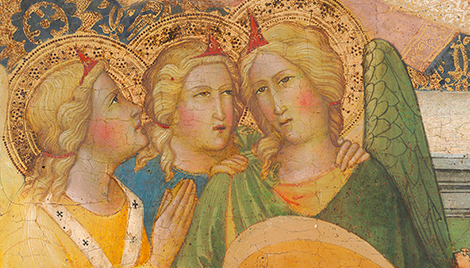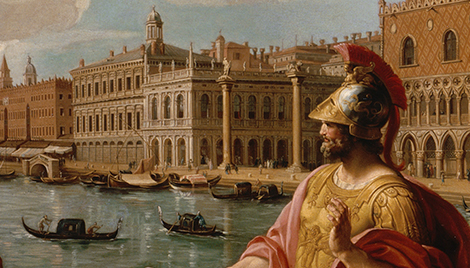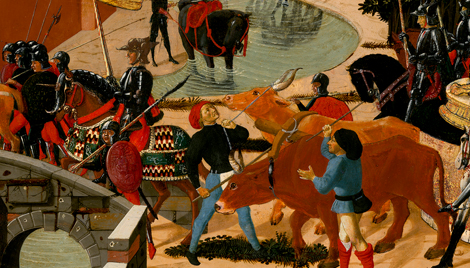Devotional Cross
Devotional Cross
- Artist
- Student of Benozzo Gozzoli
- Artist Dates
- c. 1421-1497
- Artist Nationality
- Italian
- Title
- Devotional Cross
- Date
- after 1461
- Medium
- tempera and gilding on panel
- Dimensions
- 52.7 x 41.6 cm (20-3/4 x 16-3/8 in)
- K Number
- K372
- Repository
- Museum of Art and Archaeology
- Accession Number
- 61.73
- Notes
Provenance
Count Louis Paar, Rome; (his sale, Giacomini & Capobianchi, Palais de Venise, Rome, 20-28 March 1889, no. 355 as Gozzoli). (Count Alessandro Contini Bonacossi [1878-1955] Rome-Florence); sold to Samuel H. Kress [1863-1955] on 10 October 1935; gift to the National Gallery of Art in 1939; deaccessioned in 1952 and returned to the Samuel H. Kress Foundation; gift 1961 to Museum of Art and Archaeology, University of Missouri in 1961, no. 61.73.
Catalogue Entry
Student of Benozzo Gozzoli
Devotional Cross
K372
Columbia, Mo., University of Missouri, Study Collection (61.73), since 1961. Wood. 201 X 16f in. (52'7 X 41'6 em.). Inscribed on God the Father's open book: ΑΩ (the beginning and the end); and at the top of the cross: INRI (Jesus of Nazareth, King of the Jews). Good condition. Similar to a drawing in the Uffizi, Florence,(1) attributed to this artist, K372 probably dates from about 1480/90, when Benozzo's influence on Alunno was subject to a Byzantinizing tendency, more evident in the painting than in the drawing.(2) In the quatrefoils are God the Father at the top, the Virgin and St. John the Evangelist at the sides, and St. Catherine of Siena, exhibiting the stigmata, at the bottom. Below God the Father is a symbol of Christ's sacrifice, the pelican giving her blood to feed her young. Provenance: GrafLouis Paar (sold, Rome, Mar. 20-28,1889, no. 355, as Gozzoli). Contini Bonacossi, Florence. Kress acquisition, 1935 – exhibited: National Gallery of Art, Washington, D.C. (318), 1941-52.(3)
References
(1) Uffizi no. 1866c, recto; reproduced by Berenson, fig. 2 of the Bollettino citation in note I, above. (2) In ms. opinions K372 has been attributed to the Esiguo Master by G. Fiocco, R. Longhi, F. M. Perkins, A. Venturi, and W. E. Suida, who later identifies the artist as Amadeo da Pistoia. B. Berenson attributes it to Alunno diBenozzo. (3) Preliminary Catalogue, 1941, pp. 2 f, as Alunno di Benozzo.






